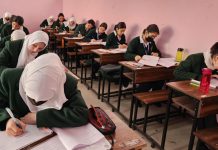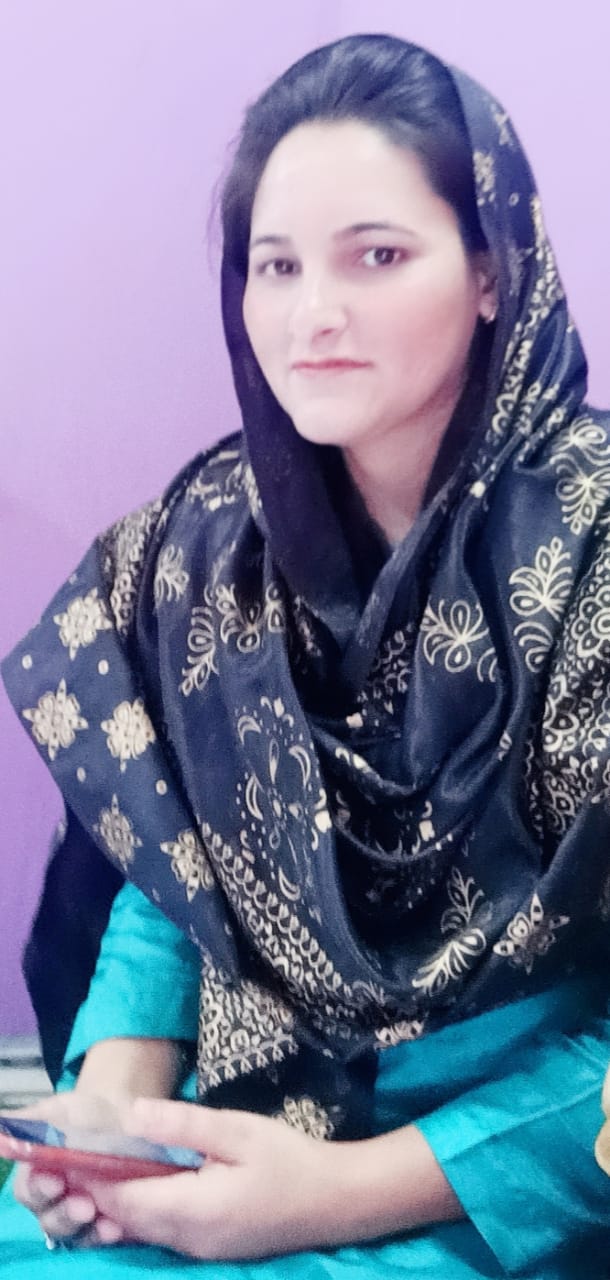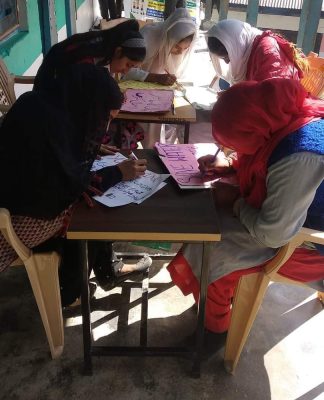The year 2020 marked 110 years of International Women’s Day celebration. This year was slated to be a turning point. A new beginning for centuries-long struggle. It is also the 25th year of Beijing Platform Action which was formulated with the aim to bring about ground-breaking outcomes for gender equality.
Instead, Feminism has been locked-down and the progress of achieving gender-equality seems to be slowing down, arrested in the cuffs of the pandemic. In content emerging from across the world, the pandemic has been declared a disaster for gender justice. It has exposed the existing inequalities and even to some extent, further deepened them. One must not forget; the pandemic has not been produced in a vacuum. It is a part of our world now. A world that rests on imbalanced socio-politico-economic structures which amplify the impact of the COVID-19 crisis towards the most vulnerable groups.
Women are at greater risk from the health perspective of facing the pandemic. While early reports that emerged from different parts of the world provide evidence that more men are dying compared to infected women, more women are likely to catch the virus in the first place by comprising 70% in the front-line healthcare workforce. The brunt of inadequate infrastructure, leading to ill-equipped healthcare employees, is faced by women who are nurses and primary care providers in the hospitals. The past experiences of outbreaks present evidence of increased maternal mortality, as resources and priorities are re-allocated to the containment of the virus.
Across every sphere, from health to the economy, security to social protection, the impacts of COVID-19 are exacerbated for women and girls simply by virtue of their sex
- Health Impact
Health pandemics can make it more difficult for women and girls to receive treatment and health services. This is compounded by multiple or intersecting inequalities, such as ethnicity, socioeconomic status, disability, age, race, geographic location and sexual orientation, among others which influences access and decision-making to critical health services and information about COVID-19. Women and girls have unique health needs, but they are less likely to have access to quality health services, essential medicines and vaccines, maternal and reproductive health care, or insurance coverage for routine and catastrophic health costs, especially in rural and marginalized communities. Restrictive social norms and gender stereotypes can also limit women’s ability to access health services. All of this has particular impacts during a widespread health crisis.
Women may be at risk or exposure due to the occupational sex-segregation:
Globally, women make up 70 percent of the health workforce and are more likely to be front-line health workers, especially nurses, midwives and community health workers. They are also the majority of health facility service-staff – such as cleaners, laundry, catering – and as such they are more likely to be exposed to the virus. In some areas, women have less access to personal protective equipment or correctly sized equipment. Despite these numbers, women are often not reflected in national or global decision-making on the response to COVID-19.
Impacts on sexual and reproductive health:
The provision of sexual and reproductive health services, including maternal health care and gender-based violence related services, are central to health, rights and well-being of women and girls. The diversion of attention and critical resources away from these provisions may result in exacerbated maternal mortality and morbidity, increased rates of adolescent pregnancies, HIV and sexually transmitted diseases. In Latin America and the Caribbean it is estimated that an additional 18 million women will lose regular access to modern contraceptives, given the current context of COVID-19 pandemics.
- Gender based Violence :
On 5 April, the Secretary-General called for a global ceasefire and an end to all violence everywhere so that we can focus our attention and resources on stopping this pandemic. But violence is not just on the battlefield. It is also in homes. Violence against women and girls is increasing globally as the COVID-19 pandemic combines with economic and social stresses and measures to restrict contact and movement. Crowded homes, substance abuse, limited access to services and reduced peer support are exacerbating these conditions. Before the pandemic, it was estimated that one in three women will experience violence during their lifetimes.

Many of these women are now trapped in their homes with their abusers. While it is too early for comprehensive data, there are already many deeply concerning reports of increased violence against women around the world, with surges being reported in many cases of upwards of 25% in countries with reporting systems in place. In some countries reported cases have doubled. These numbers are also likely to reflect only the worst cases. Without access to private spaces, many women will struggle to make a call or to seek help online. Alongside the increase in numbers, violence against women is taking on new complexity: exposure to COVID-19 is being used as a threat; abusers are exploiting the inability of women to call for help or escape; women risk being thrown out on the street with nowhere to go. At the same time, support services are struggling. Judicial, police and health services that are the first responders for women are overwhelmed, have shifted priorities, or are otherwise unable to help. Civil society groups are affected by lockdown or reallocation of resources. Some domestic violence shelters are full; others have had to close or have been repurposed as health centres.

It is important for national response plans to prioritize support for women by implementing measures that have proven to be effective. These include:
> Integrating prevention efforts and services to respond to violence against women into COVID-19 response plans;
> Designating domestic violence shelters as essential services and increasing resources to them, and to civil society groups on the front line of response;

> Expanding the capacity of shelters for victims of violence by re-purposing other spaces, such as empty hotels, or education institutions, to accommodate quarantine needs, and integrating considerations of accessibility for all;
> Designating safe spaces for women where they can report abuse without alerting perpetrators, e.g. in grocery stores or pharmacies;
>Moving services online;
> Stepping up advocacy and awareness campaigns, including targeting men at home.
It is important for national responses to include specific communications to the public that justice and the rule of law is not suspended during periods of confinement or lockdown. Gender based violence prevention strategies need to be integrated into operational plans of the justice and security sectors for the crisis and statutes of limitations on offenses, particularly sexual violence offenses, should be suspended.
- Economic Impact :


The impact of COVID-19 across the global economy will be profound. Due to COVID-19, markets and supply chains have been disrupted, businesses are required to close or scale back operations, and millions have or will lose their jobs and livelihoods. ILO has estimated that full or partial lockdown measures now affect almost 2.7 billion workers, representing around 81% of the world’s workforce, while the IMF projects a significant contraction of global output in 2020. COVID-19 is lurching the world economy towards a global recession, which will be strikingly different from past recessions. Emerging evidence on the impact of COVID-19 suggests that women’s economic and productive lives will be affected disproportionately and differently from men. Across the globe, women earn less, save less, hold less secure jobs, are more likely to be employed in the informal sector. They have less access to social protections and are the majority of single-parent households. Their capacity to absorb economic shocks is therefore less than that of men. As women take on greater care demands at home, their jobs will also be disproportionately affected by cuts and lay-offs. Such impacts risk rolling back the already fragile gains made in female labor force participation, limiting women’s ability to support themselves and their families, especially for female-headed households. In many countries, the first round of layoffs has been particularly acute in the services sector, including retail, hospitality and tourism, where women are overrepresented. The situation is worse in developing economies where the vast majority of women’s employment – 70 per cent – is in the informal economy with few protections against dismissal or for paid sick leave and limited access to social protection. To earn a living these workers often depend on public space and social interactions, which are now being restricted to contain the spread of the pandemic. The Ebola virus showed that quarantines can significantly reduce women’s economic and livelihood activities, increasing poverty rates, and exacerbating food insecurity. In Liberia where approximately 85 per cent of daily market traders are women, Ebola prevention measures (which included travel restrictions) severely impacted women’s livelihoods and economic security. Moreover, while men’s economic activity returned to pre-crisis levels shortly after preventative measures subsided, the impacts on women’s economic security and livelihoods lasted much longer. From past experience and emerging data, it is possible to project that the impacts of the COVID19 global recession will result in a prolonged dip in women’s incomes and labor force participation, with compounded impacts for women already living in poverty. For those who, as a result of recent economic growth managed to escape from extreme poverty, they are likely to fall back into this most vulnerable of situations once again.
- CONCLUSION:
A pandemic amplifies and heightens all existing inequalities. These inequalities in turn shape who is affected the severity of that impact, and our efforts at recovery. COVID – 19 pandemic and its socioeconomic impact have created at global crisis. It’s recovery requires a whole of society response to match its sheer scale and complexity. But this response, whether at the national or international level, will be significantly weekend if it doesn’t factor in the ways in which inequalities have made all of us more vulnerable to the impacts of the crisis. Or, if we choose to simply repeat past policies and fail to use this moment to rebuild more equal, inclusive and resilient societies.
Instead, every COVID-19 response plans, and every recovery package and budgeting of resources, needs to address the gender impacts of this pandemic. This means:
(1) including women and women’s organizations at the heart of the COVID-19 response;
(2) transforming the inequities of unpaid care work into a new, inclusive care economy that works for everyone; and
(3) designing socio-economic plans with an intentional focus on the lives and futures of women and girls.
Putting women and girls at the centre of economies will fundamentally drive better and more sustainable development outcomes for all, support a more rapid recovery, and place us back on a footing to achieve the Sustainable Development Goals.
Asya Wani
M. Ed student of cluster university Jammu
Email : asiyawani3041987@gmail.com
















































